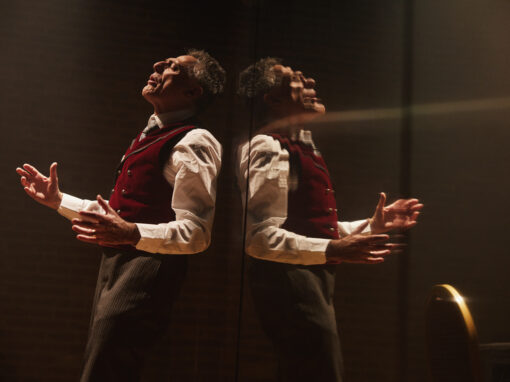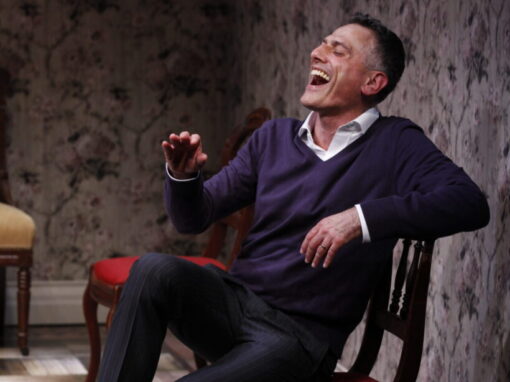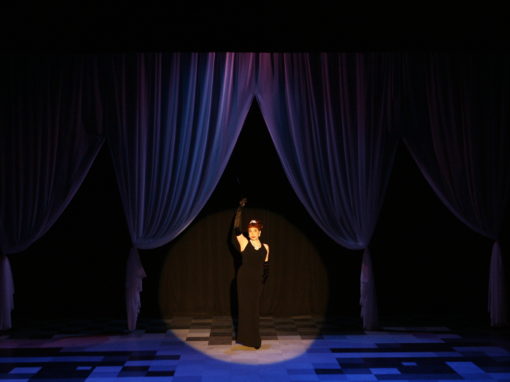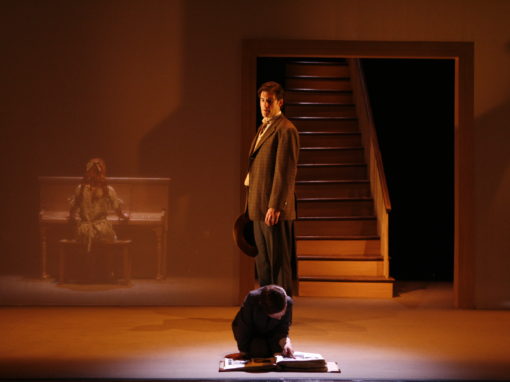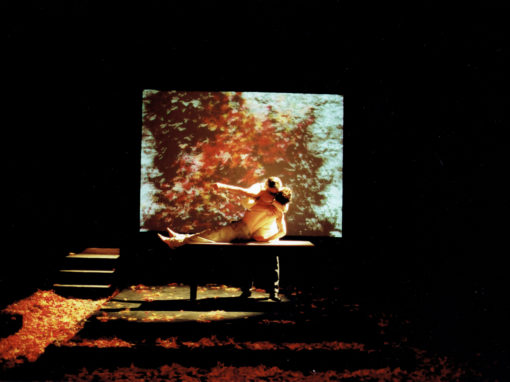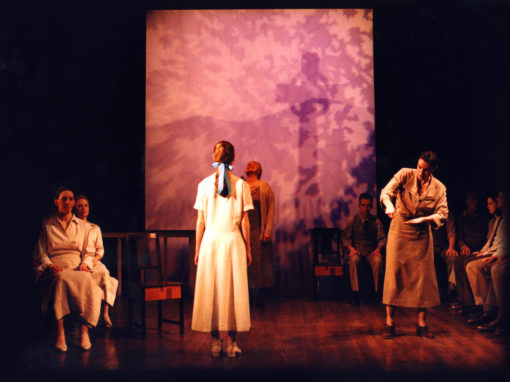The Two Stories of East 4th Street // by John Wellmann
Worlds apart, connected by a flight of stairs, The Connelly Theatre housed one of actor John Wellmann’s most memorable experiences.
I was asked to set down a few words about what it was like to be in Transport Group’s second ever production, Requiem for William.
Requiem for William ran from February 2 to March 2 in 2003. I have virtually no memory of last week and here I am expected to remember something that happened in the month of February, 17 years ago. Luckily for Transport Group, my recollections of this rare and inspired production are crystal clear.
Requiem for William was comprised of seven short plays by William Inge. The one-act plays were written between 1949 and 1962 and published while Inge was at the height of his powers and riding the crest of his popularity.
Exploring themes of repressed desire, loneliness, grief, and the obsession with fame, the seven plays were To Bobolink, For Her Spirit; The Rainy Afternoon; The Tiny Closet; Memory of Summer; The Boy in the Basement; The Strains of Triumph; and A Social Event.
And because just doing seven plays isn’t challenging enough, a brand-new original song sung by the character in each play that had the smallest part followed each piece. A different songwriter or songwriting team wrote every song, and the evening was bookended by a piece by composer/lyricist Michael John LaChiusa called “How Much Love?” At the top of the show, the great Lovette George sang it as a solo and in the finale, it became a choral number with the entire cast gathered on stage.
The production was performed at The Connelly Theatre on way way way East 4th Street. No actor appeared in more than one play. So, there were 7 plays, 7 new songs, 26 actors, 11 songwriters, a creative team, a full stage management crew, and a small orchestra led by powerhouse Mary-Mitchell Campbell. Tickets cost $15 and there is no way that anyone involved was paid more than $100, if at all.
The play I was in was The Tiny Closet. My castmates were Tony DiBuono and Cheryl Stern. The Dramatists Play Service synopsis reads like this: “A fussy, middle-aged bachelor is upset to find that someone has been tampering with the lock on his closet—and has discovered a strange secret hidden there.” The strange hidden secret is that our fussy, middle-aged bachelor makes ladies’ hats and hides them in his closet. Many reductive interpreters of the play think of our bachelor as a “cross-dresser” or “transvestite” but for us he was a dreamer in a colorless, bleak world who just wanted to create something private and beautiful and highly sophisticated. His ladies’ hats were the heartfelt silent scream of a “sensitive” artist in a brutal world that thinks of him as a freak and a dangerous weirdo. His tragedy is not that his secret is discovered; it is that the only beautiful thing he has ever created has been violated and ruined.
The experience of being in Requiem for William was a story of Upstairs/Downstairs. Upstairs was the theatre and the stage. Downstairs was the basement.
The basement served as the dressing room, green room, and bathroom for 26 cast members. The building was originally an orphanage and dates back to the mid-1870s. Between the mid-1870s and 2003, exactly zero improvements were made to the basement.
Upstairs on the stage was the set designed by John Story. I don’t know how much of Transport Group’s now vast community knows about John. He was an original member of Transport Group, an essential collaborator of Jack’s (Cummings, TG Artistic Director) and his scenic vision was nothing short of genius. John passed away in December of 2005. The set for Requiem for William was a central platform, several doorways, some plain staircases, and an upstage screen that projected images which individualized each play. The entire stage was covered in autumn leaves. It was achingly beautiful, evocative of the sadness of a “requiem” or the loneliness of a chilly autumn day in a graveyard. I hope a good photo of the set accompanies this essay so you can see for yourself how gorgeous it was.
So upstairs, you have serious artistry and a profound desire to bring to life the sadness and longing in Inge’s work. You have a creative team and 26 actors striving in the collective effort of realizing something complicated and ambitious. It was a true labor of love. We were all professionals, some of us were legends (more on that in a second), and we were doing something we thought was incredibly essential in service to a brilliant American playwright whose modern reputation doesn’t give him proper credit.
And then downstairs, there was that basement with its randomly hung curtains that gave you less privacy than if there had been no curtains at all. There were makeshift make-up tables in every corner, couches and tables that were old when Inge was alive, and all the noise you would expect from 26 New York City actors in the basement of an orphanage in the far East Village. There was one bathroom which looked like a gutted bomb shelter. I believe there were 2 sinks and perhaps 4 stalls. For 26 people. I already mentioned that we were all only in one play and then we all sang that one song at the very end. So, 90% of our time during the run was spent in that basement.
And somehow, I can’t remember ever not loving every second of it. There were so many running jokes about the glamour of our situation and how we’d all worked hard only to end up in a basement in the East Village. We simply loved being together. I’m not going to say that no one ever complained or was in a bad mood. That can’t be possible. But I am equally certain that we laughed all the time, the energy was incredibly festive, and we were all so proud that the show even existed. The downstairs grunge was simply no contest against how gloriously engaged we were with the upstairs creation. I don’t have a single bad memory of Requiem for William.
So, about legends. One of the 26 cast members was renowned soprano and Hollywood ghost singer, Marni Nixon. And she gave me one shatteringly perfect memory that I will hold forever. During one performance, I found myself miraculously alone in the bathroom—or so I thought. I was standing at one of the sinks and I just started to hum Michael John’s song that was the closing number of the show. Suddenly, a voice in one of the stalls begins to hum with me. I knew in one second that it was Marni. So, I start actually singing and she starts singing the harmony and for a few precious seconds, I was singing a duet with the voice of my childhood in the most beautiful bathroom I will ever see.

About the author:
John Wellmann is originally from Baltimore and has lived in New York City since 1991. A professional actor for 20 years, he appeared in five Transport Group productions (Our Town, Requiem for William, The Audience, cul-de-sac, and The Boys in the Band). He taught indoor cycling and served as the National Director of Instructor Training at Flywheel Sports from 2012 till early 2020. John is currently teaching cycling classes via Zoom at tru-community.com.

Explore Our Past Shows
